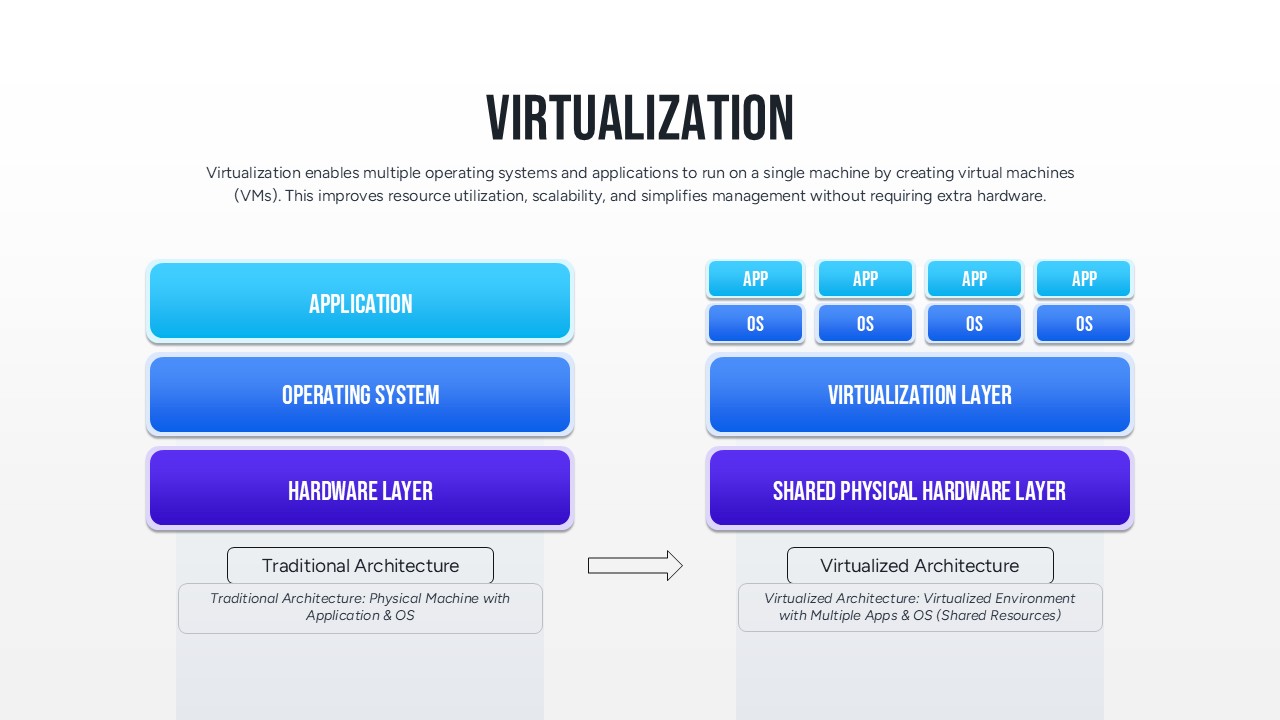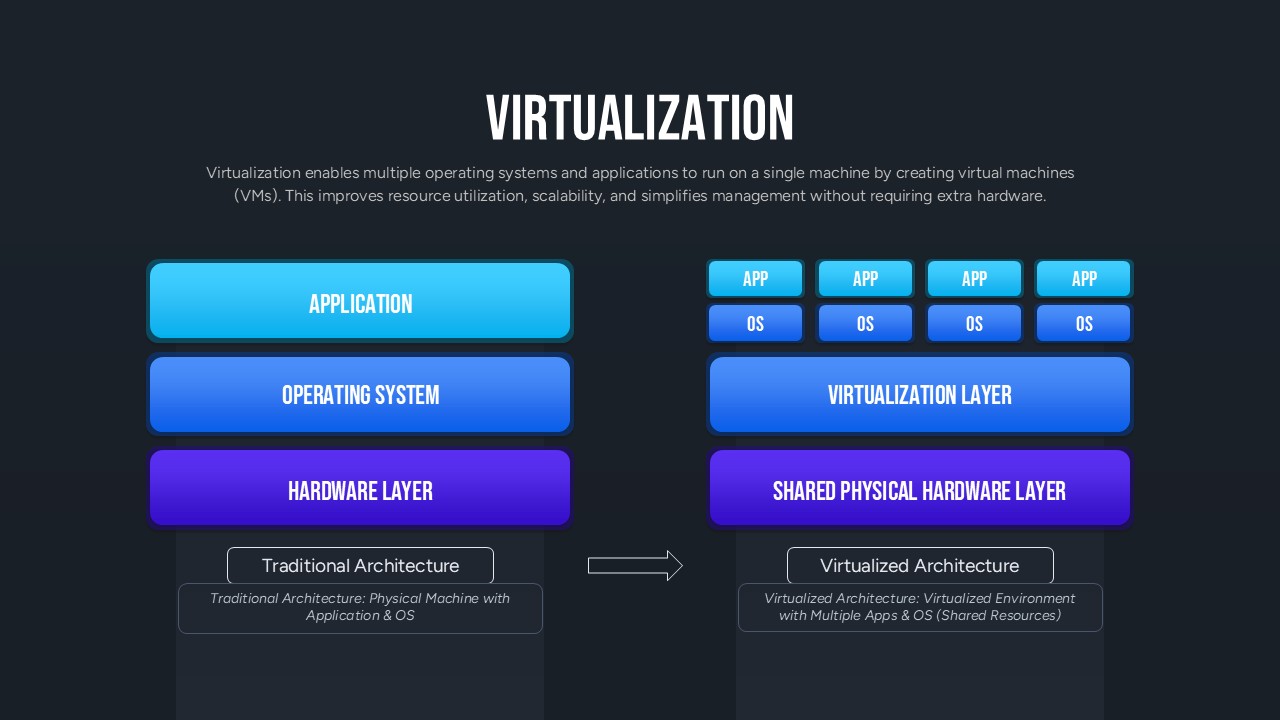virtualization-architecture-template-powerpoint-google-slides


Description
This dark-themed slide presents a side-by-side comparison of traditional and virtualized IT architectures, making complex infrastructure concepts instantly accessible. On the left, three stacked blocks—Application, Operating System, and Hardware Layer—illustrate a single physical machine running one OS and app. An arrow points right to the virtualized model, where multiple app/OS pairs sit atop a shared physical hardware layer with a dedicated virtualization layer in between. Each element uses a distinct color (cyan for apps, blue for operating systems/virtualization layer, purple for hardware) and clean flat icons to reinforce visual hierarchy. Thin connectors and a minimal drop-shadow effect add depth without distracting from the content, while a concise header and subtitle define virtualization’s benefits: improved resource utilization, scalability, and simplified management.
Fully editable master slides empower users to swap icons, adjust gradients, or rename layers to reflect specific platforms (e.g., hypervisors, container engines). The slide’s dark background ensures vivid color contrast, optimal for video calls and in-room presentations. Text placeholders maintain consistent font sizing and spacing, so resizing or translating content preserves alignment. Whether you need to highlight hypervisor comparisons, demo cloud migrations, or train IT teams on virtual-machine provisioning, this template streamlines customization. It also supports inserting performance metrics beside each layer or duplicating blocks for extended architectures, all while preserving pixel-perfect clarity in both PowerPoint and Google Slides.
Who is it for
IT architects, systems administrators, DevOps engineers, cloud consultants, and technical trainers will leverage this slide to explain virtualization concepts, plan migrations, or align stakeholders on infrastructure strategy.
Other Uses
Repurpose this layout for containerization workflows, microservices overviews, cloud adoption roadmaps, or any scenario requiring clear, side-by-side technology comparisons.
Login to download this file

















































